Cedar Bog Isn’t Actually a Bog
I know weird right. It’s actually a Fen or a peat accumulating wetland that has a steady supply of groundwater flowing in and out of it. To contrast that to a bog it is also a peat accumulating environment however water accumulates as from rain and it just sits there unless it is being evaporated. This water flow that is present in fens is due to the bog being surrounded by sand and limestone gravel that was brought by the glaciers the entire Mad River Valley surrounding cedar bog accumulates a lot of alkaline, cold groundwater. Therefore the Mad River Valley is a great aquafer for the Bog. Not only that but the bog lies on the site of where the ancient Teays River Valley was so there is buried groundwater deep underground that can be utilized as well.
Specially Assigned Plants
You know the drill by now, the types of plants I had to identify were Apiaceae plants. These plants are members of the carrot family and there main distinctive feature is their umbel shaped flowers. The flowers themselves have 5 calyxes, 5 corolla, 5 androecium, and 2 gynoecium. The 2 gynoecium are carpels fused together in an inferior ovary. The plants themselves are aromatic and the fruits are schizocarps. With that being said here are the 2 plants that I found out in the not bog bog.
Up first is the Golden Alexander, Zizia aurea. This golden little umbel shaped flowers are abundant and very versatile plants as long as they have adequate moisture early in the growing season. I believe we have been able to find them on all of our fieldtrips we have gone on this semester. Fun fact Native Americans would use the roots to make tea that would break fevers.
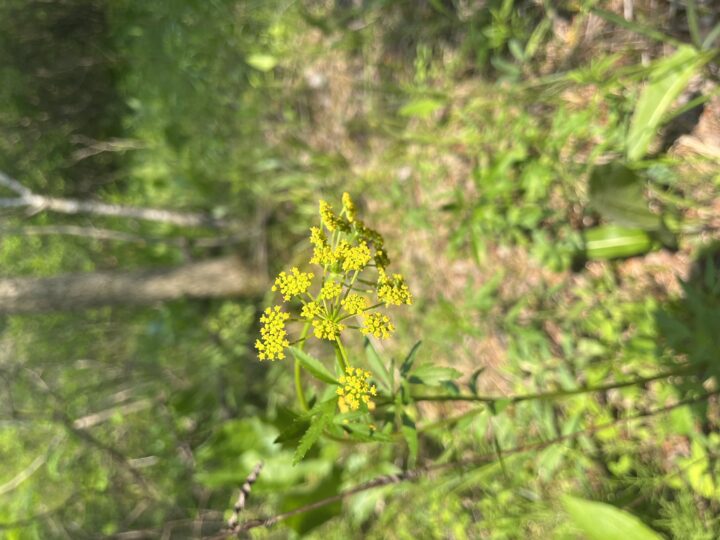
Golden Alexander’s apiaceae
My other member of the Apiaceae that I was able to spot our bog trip was Canadian Black Snakeroot, Sanicula canadensis. This plant was a little tougher to spot and identify because the flowers have just barley started to form. You can see however little tiny flower buds that are branching in that distinctive umbellet shape. Fully grown the flowers are greenish-yellow with tiny white patches. The fruits of these guys are bur like achenes that can attach to animals and clothing to be dispersed. Fun fact Native Americans used this plant to treat snake bites
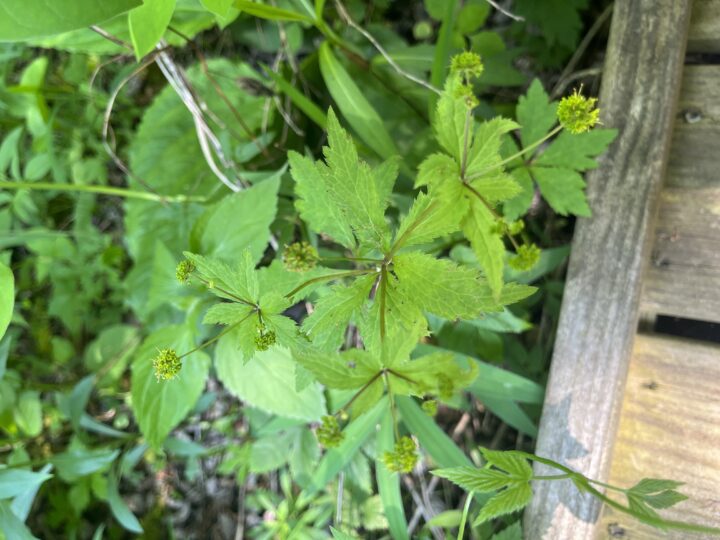
Canadian Black Snakeroot apiaceae
Fen Specific Plants
The fen at Cedar Bog is home to many rare plant species specific to its alkaline environment. Lets take a look at some of those plants. First up is the Showy Lady’s Slipper Orchids, Cypripedium reginae. The flowers are 6 parts and along with white petals the orchid has a purple pouch shaped labellum to attract insects. These orchids are very specialized to live in a fen environment with a coefficient of conservatism of 10.
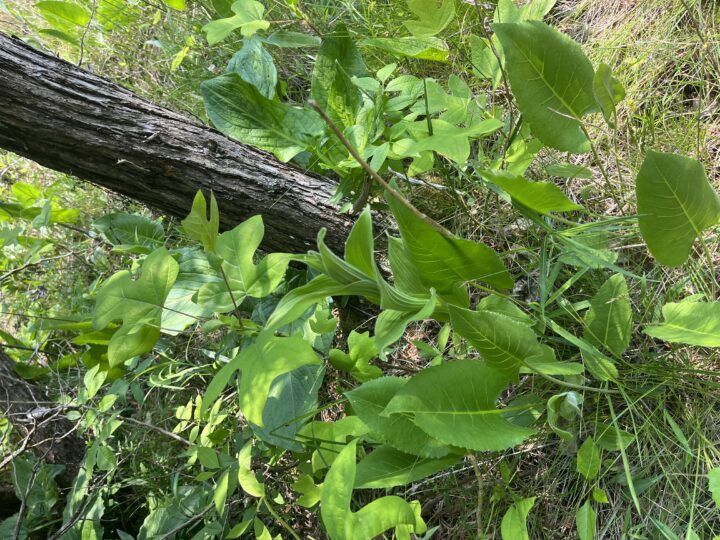
Showy lady slipper orchids 10
Next is the Swamp Birch, Betula alleghaniensis. This tree is actually the largest North American species of birch. It has alternate oval shaped leaves, catkin flowers, and its seed is a winged samara. This tree is also very specialized to the fen environment with a coefficient of conservatism of 10.
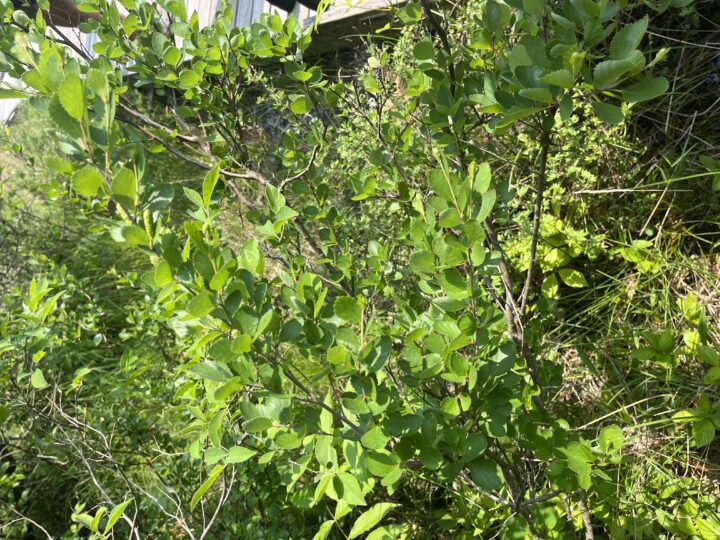
Swamp birch 10
Following that is the Prairie Valerian, Valeriana ciliata. What is unique about this plant is the unisexual whitish-green flowers with the males having 3 stamen on the male flower and a 3 lobed stigma on the female flowers. These flowers give rise to an achene as the fruit. Again a very specialized plant with a coefficient of conservatism of 10.

Prairie valerian 10
Finally we have the Fan-Leaved Bladderwort, Utricularia intermedia. The flowers of this bladderwort are yellow and snapdragon like. This plant being a bladderwort has no roots but instead a stem above the water and below the water to carry nutrients. The fruit of these guys is a capsule and the coefficient of conservatism is 10.
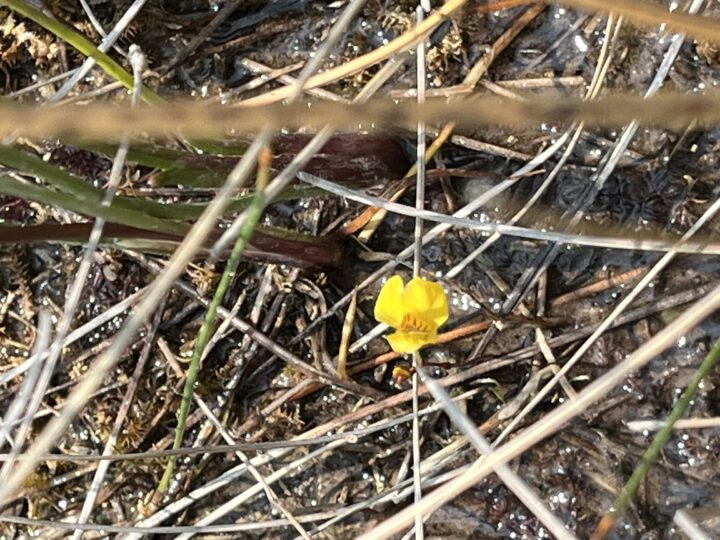
Fan leaved Bladder wort 10
In addition to those fen specific plants we saw two ash trees at Cedar Bog. One of those is the Green Ash, Fraxinus pennsylvanica. Green Ash is an opposite leaved tree with pinnately compound leaves that have minimally serrated margins. The bark is smooth and grey. They produce compact panicles that give rise to a samara with an elongated wing. The coefficient of conservatism is a 3.

Green ash 3
The other ash tree we saw in the bog was a Black Ash, Fraxinus nigra. Black Ash is an opposite leaved tree with pinnately compound leaves that have distinctive serrated margins. The bark is dark and corky. They produce compact panicles that give rise to a samara with elongated wing. The coefficient of conservatism is 7.
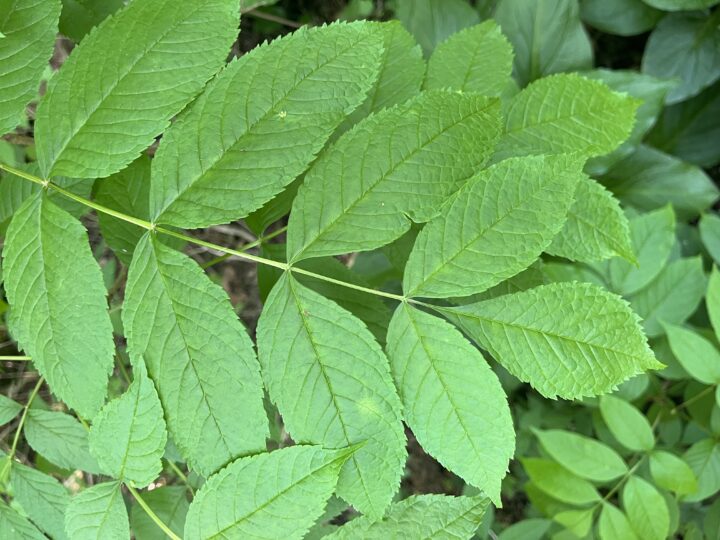
Black ash 7
Floristic Quality of Plant Communities
Our last task was to assess the Floristic Quality of the following plant communities from firstly the swamp forest and secondly the sedge meadow.
SWAMP FOREST
- Marsh Marigold, Caltha palustris.
- WET: OBL
- CC: 6
- Virginia Iris, Iris viginica
- WET: OBL
- CC: 6
- Spice Bush, Lindera benzoin
- WET: FACW-
- CC: 5
- Golden Ragwort, Senecio aureus
- WET: FACW
- CC: 4
- Skunk Cabbage, Symplocarpus foetidus
- WET: OBL
- CC: 6
- Northern Swamp Buttercup, Ranunculus hispidus
- WET: FAC
- CC: 4
FAQI Value= 11.8
SEDGE MEADOW
- Shrubby Cinquefoil, Dasyphora fruticosa
- WET: FACW
- CC: 10
- Round Leaf Sundew, Drosera rotundifolia
- WET: OBL
- CC: 7
- Swamp Birch, Betula pumila
- WET: OBL
- CC: 10
- Swamp Valerian, Valeriana uliginosa
- WET: (FACW+)
- CC: 10
- Poison Sumac, Toxicodendron vernix
- WET: OBL
- CC: 7
- Lesser Bladderwort, Utricularia minor
- WET: OBL
- CC: 8
FAQI Value= 21.2

Couldn’t find the Ranunculus septentrionalis of I substituted in Ranunculus hispidus.